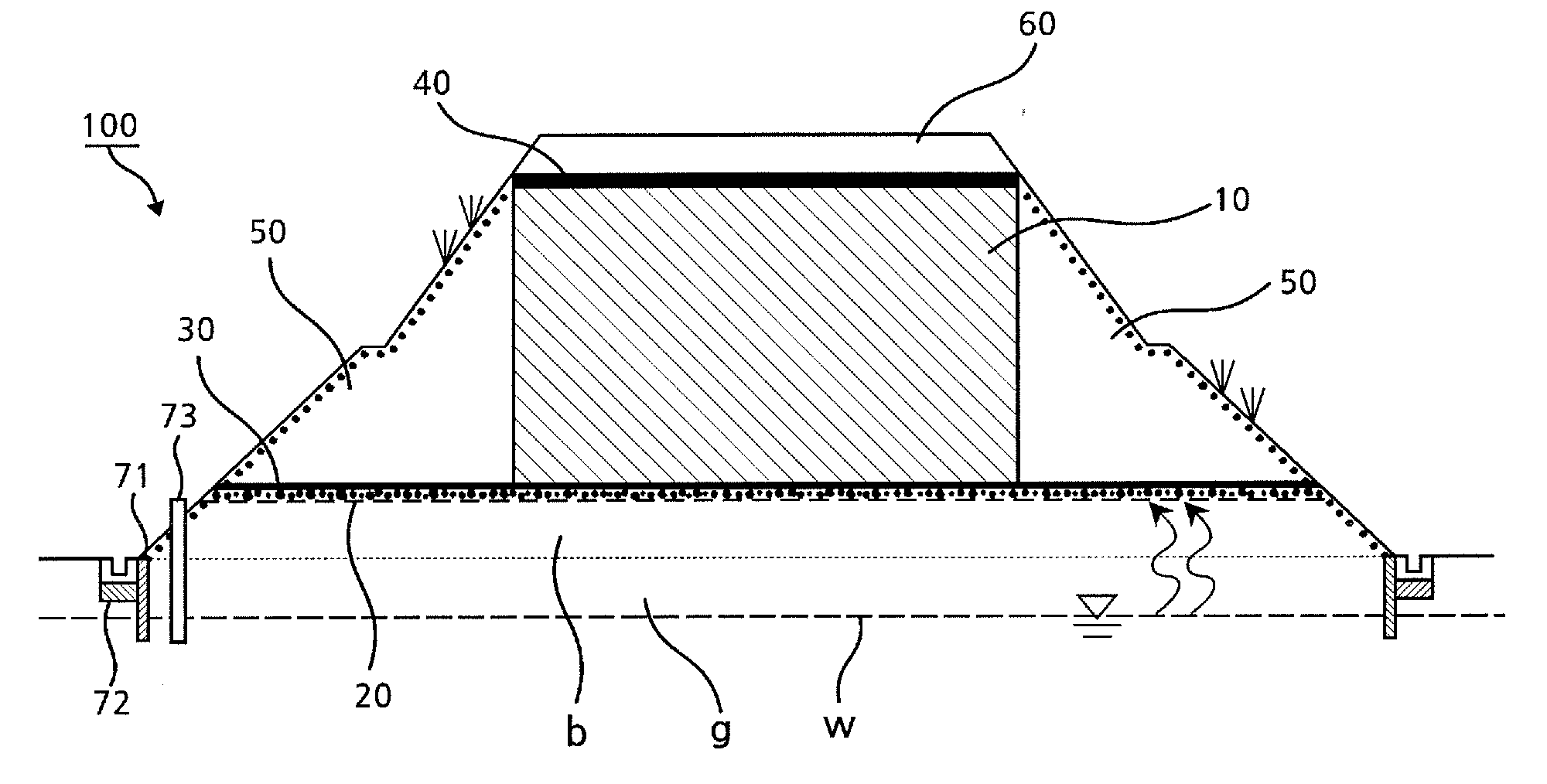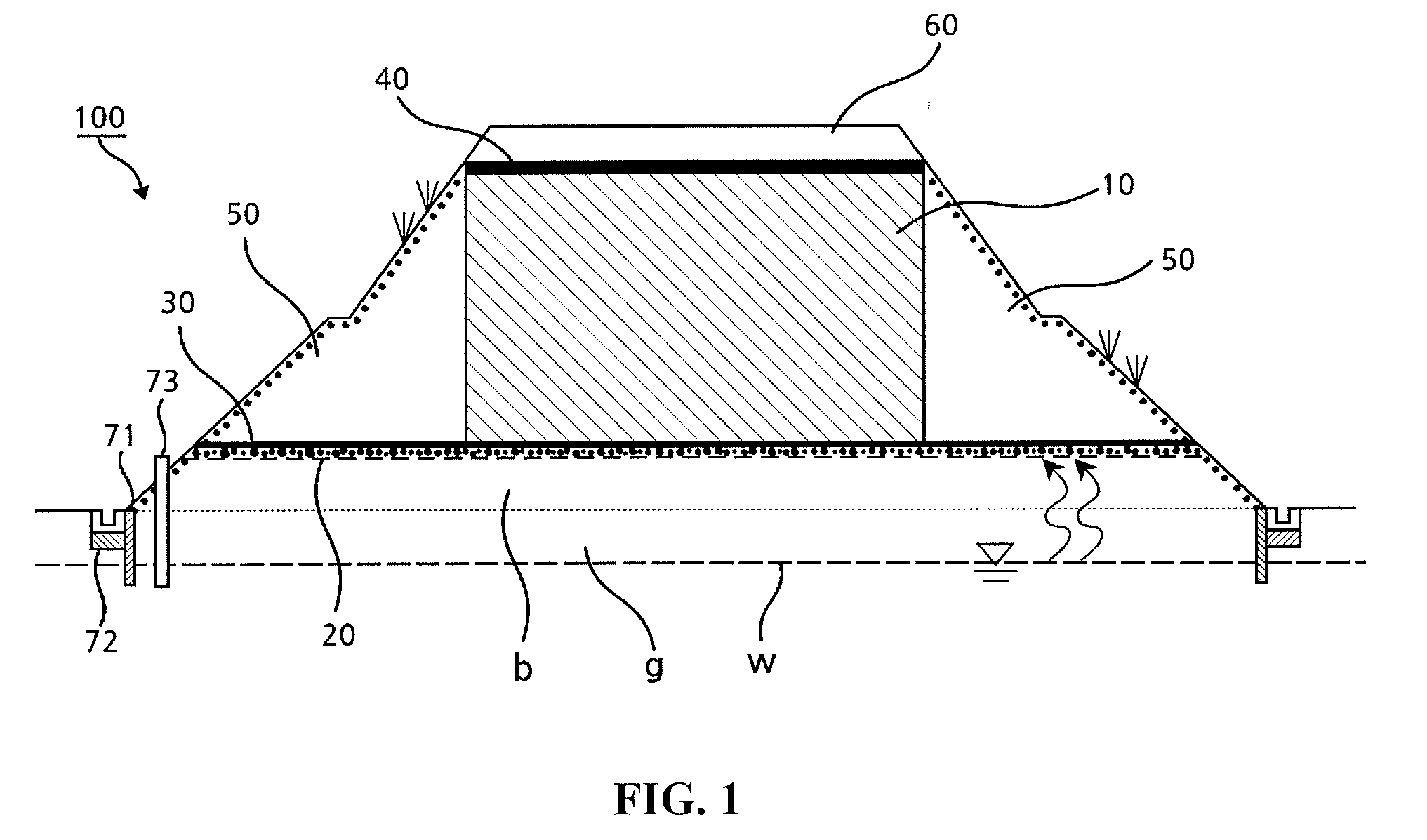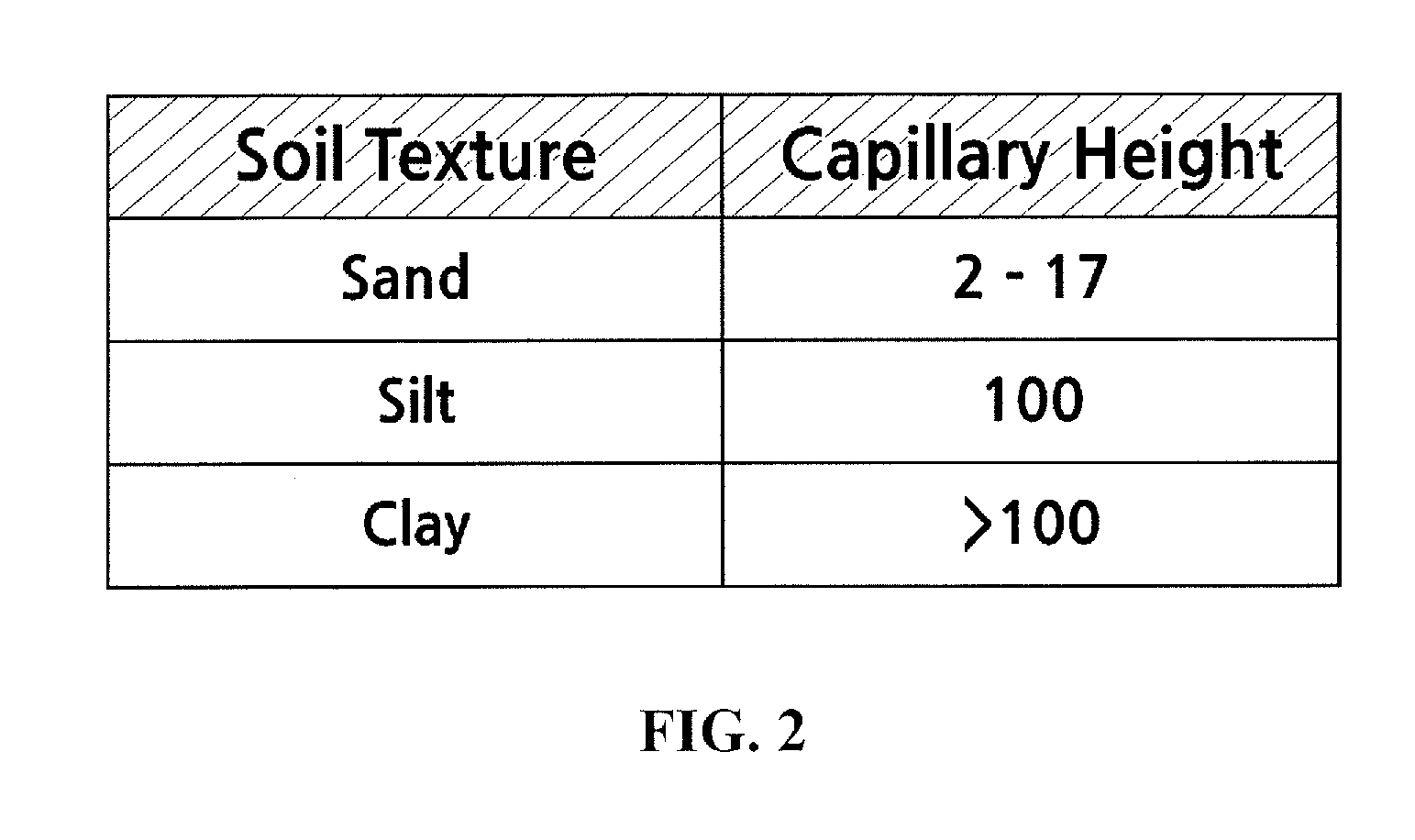Banking structure using rocks producing acid drainage
a technology of acid drainage and bank structure, applied in the field of bank structure, can solve the problems of reduced ground stability, large-scale underground excavation, corrosion of structures, etc., and achieve the effect of improving performan
- Summary
- Abstract
- Description
- Claims
- Application Information
AI Technical Summary
Benefits of technology
Problems solved by technology
Method used
Image
Examples
Embodiment Construction
[0028]Hereinafter, a banking structure using rocks producing acid drainage according to a first embodiment of the present invention will be described in detail with reference to the accompanying drawings.
[0029]FIG. 1 is a schematic cross-sectional view of a banking structure according to a first embodiment of the present invention.
[0030]Referring to FIG. 1, a banking structure 100 according to the first embodiment of the present invention includes a banking layer 10, a capillary breaker layer 20, a lower blocking layer 30, an upper blocking layer 40, and a cover layer 50.
[0031]The banking structure 100 according to the first embodiment is constructed in order of the capillary breaker layer 20, the lower blocking layer 30, the banking layer 10, the upper blocking layer 40, and the cover layer 50. However, for convenience of description, the banking layer 10 will be described first.
[0032]The banking layer 10 may be a layer that is formed by mixing the rocks producing the acid drainage...
PUM
 Login to View More
Login to View More Abstract
Description
Claims
Application Information
 Login to View More
Login to View More - R&D
- Intellectual Property
- Life Sciences
- Materials
- Tech Scout
- Unparalleled Data Quality
- Higher Quality Content
- 60% Fewer Hallucinations
Browse by: Latest US Patents, China's latest patents, Technical Efficacy Thesaurus, Application Domain, Technology Topic, Popular Technical Reports.
© 2025 PatSnap. All rights reserved.Legal|Privacy policy|Modern Slavery Act Transparency Statement|Sitemap|About US| Contact US: help@patsnap.com



